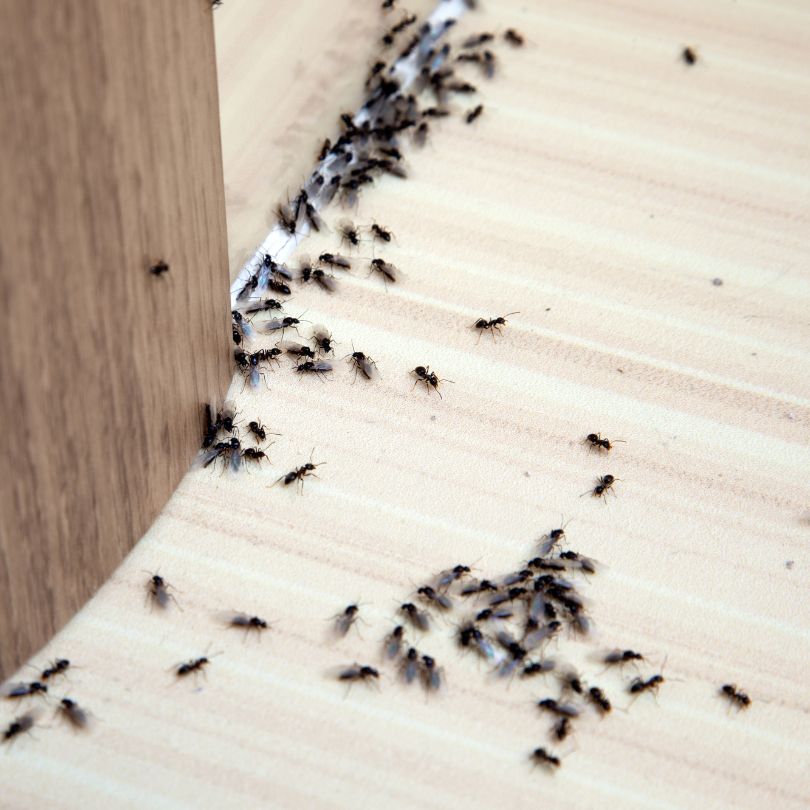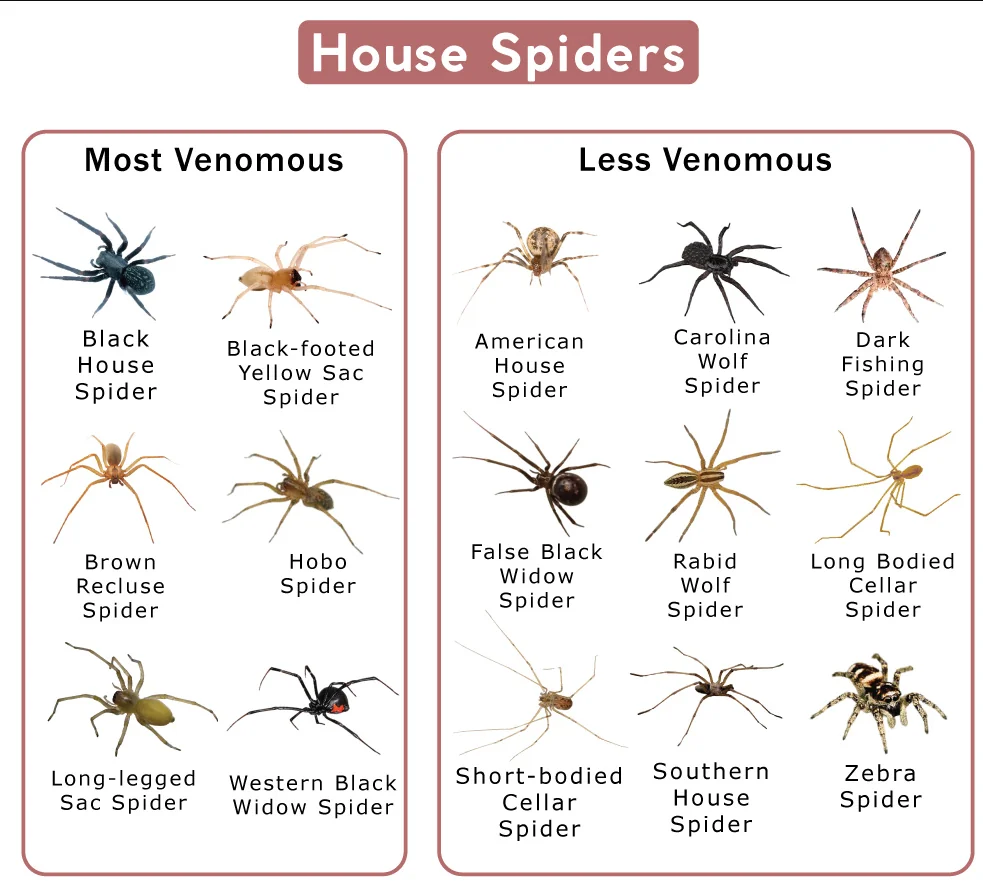Ants are among the most common pests in Florida, thanks to the state’s warm and humid climate. Whether you’re dealing with a small trail of ants across the kitchen counter or a sizable colony in the yard, these tiny invaders can quickly become an overwhelming problem. Residents of Apopka, Plymouth, and Zellwood often find that a simple do-it-yourself solution just doesn’t cut it—especially when multiple ant species may be involved. Our ant control service is designed to help you tackle current infestations and reduce the risk of future invasions. From identifying different types of ants to implementing targeted strategies that limit their reproduction and spread, we offer a thorough approach to safeguarding homes and businesses. Keep reading to learn more about the wide range of ant species found in Florida, why they pose challenges, and how a specialized ant control program can help.
Understanding Florida’s Ant Population

Florida’s environment is ideal for ants. The lush vegetation, frequent rainfall, and mild winters create the perfect conditions for colonies to flourish year-round. Unlike colder regions, where ants may go dormant or significantly reduce activity during freezing winters, Florida’s ant population remains relatively active in every season. This continuous activity can make controlling infestations more difficult if you don’t address the root causes.
Here are some of the most common ants you may encounter:
- Ghost Ants: Known for their pale, almost translucent bodies, ghost ants are extremely small and often nest indoors near moisture sources. They can be found in kitchen cabinets, bathroom sinks, or behind baseboards. Because of their size, it’s easy for them to slip through the tiniest cracks.
- Carpenter Ants: Carpenter ants are among the largest ants in Florida, and they get their name from their tendency to burrow into wood. They don’t eat wood like termites do, but they can hollow it out to create nests. Over time, a carpenter ant infestation can cause damage to wooden structures in your home.
- Fire Ants: Infamous for their painful stings, fire ants often build mounds in yards and gardens. Disturbing these mounds can lead to aggressive swarms, making it important to address fire ant colonies promptly. Fire ants can also wreak havoc by damaging electrical equipment or biting pets and wildlife.
- Argentine Ants: These ants form massive colonies and can easily expand. Argentine ants typically travel in large trails and tend to seek out sugary foods. Their colonies can merge, leading to what scientists call “supercolonies.”
- Pharaoh Ants: Tiny in size but significant in number, Pharaoh ants are notorious for quickly relocating their nests when disturbed. They can nest in hidden areas inside wall voids, making them difficult to manage without a focused strategy.
- White-Footed Ants: As their name suggests, white-footed ants have light-colored feet and darker bodies. They thrive in Florida’s moist environments and can build large colonies both indoors and outdoors. They often nest in soffits, behind siding, or within shrubs and trees around a property.

Typical Methods for Spider Treatments
- Inspection & Species ID
- Exterminators explore corners, ceilings, behind furniture, or attic beams for webs, egg sacs, or adult spiders.
- Confirming whether they’re house, orb, widow, or wolf influences if overhead eave spraying, vacuuming, or crack dusting is suitable.
- Exterminators explore corners, ceilings, behind furniture, or attic beams for webs, egg sacs, or adult spiders.
- Physical Web & Egg Sac Removal
- Immediate vacuuming or brushing away webs robs spiders of feeding grounds.
- Proper disposal (sealing them in plastic) prevents egg sacs from hatching in occupant trash.
- Immediate vacuuming or brushing away webs robs spiders of feeding grounds.
- Insecticidal Dust & Sprays
- Residual sprays or dust placed in cracks, baseboards, or overhead corners kill spiders returning to those areas.
- Occupants or pets face minimal chemical exposure with focused application on spider hideouts.
- Residual sprays or dust placed in cracks, baseboards, or overhead corners kill spiders returning to those areas.
- Insect Growth Regulators & Prey Reduction
- Minimizing insects—like roaches or flies—starves spiders. Occupants or professionals handle these underlying pests first.
- IGRs hamper insect breeding cycles, indirectly limiting spider prey populations.
- Minimizing insects—like roaches or flies—starves spiders. Occupants or professionals handle these underlying pests first.
- Vacuuming & Steam Indoors
- Routine vacuuming collects spiderlings, adults, or insect husks fueling spider expansions.
- Steam kills spiders on contact in upholstery folds without leaving chemical residue.
- Routine vacuuming collects spiderlings, adults, or insect husks fueling spider expansions.
- Exclusion & Outdoor Adjustments
- Sealing foundation gaps, installing door sweeps, or patching window screens blocks insect infiltration.
- Porch lamps changed to yellow “bug lights” reduce nighttime insect gatherings, starving spiders of easy prey.
- Sealing foundation gaps, installing door sweeps, or patching window screens blocks insect infiltration.
- Follow-Up Visits
- Newly hatched spiderlings can appear weeks post occupant or professional web removal.
- Additional occupant synergy or spot spraying ensures no leftover spider sacs rebuild new webs.
- Newly hatched spiderlings can appear weeks post occupant or professional web removal.
Service Area: Orlando (Oviedo, Winter Park, Winter Springs, Altamonte Springs, Casselberry, Longwood)
Though spiders adapt anywhere insects abound, this page focuses on Orlando, a central Florida destination, plus adjacent suburban communities: Oviedo, Winter Park, Winter Springs, Altamonte Springs, Casselberry, and Longwood. Florida’s mild winter rarely hinders spider breeding or feeding cycles, requiring occupant synergy plus specialized solutions to curb or remove spider concentrations indoors effectively.
Why Choose Us
Florida-Specific Tactics
We combine recognized spider control techniques—vacuuming webs and egg sacs, applying insecticidal dust or sprays, limiting insect prey—suited to central Florida’s climate and occupant dynamics. Occupant synergy—like maintaining dryness, sealing entry cracks—plus professional extermination surpass occupant attempts reliant on random aerosols that don’t address hidden egg sacs or an underlying insect surplus.
Thorough Inspections
Before distributing chemicals, technicians systematically explore overhead corners, behind heavy furniture, or attic beams for spider webs, egg sacs, or leftover insect shells. Identifying each problem zone clarifies whether local spot coverage or entire-home measures are warranted for occupant well-being.
Safe, Focused Chemical Usage
We use regulated insecticides or dust in typical spider hideouts—behind baseboards, cracks, or corners—rather than saturating occupant living areas. Physical removal of webs or egg sacs further reduces the spider population. Combined with occupant synergy, fewer chemicals are needed while ensuring spider kills.
Addressing Root Insect Problems
Because spiders feast on insects, occupant synergy tackling roaches, flies, or ants starves spider populations indoors. Occupant measures like storing food properly, sealing trash bins, and adjusting porch lighting hamper insect arrivals—thus limiting spider hunts inside.
Follow-Up & Follow-Through
Spider egg sacs can hatch weeks later, unleashing new spiderlings that quickly build fresh webs. Many exterminators re-check occupant sightings if webs reappear, refining treatments or occupant housekeeping to handle newly emerged spiders. Occupants gain comfort knowing each stage faces lethal contact.

Next Steps
Seeing multiple webs along ceiling corners, discovering egg sacs behind furniture, or concerned about venomous species near garages? Contact us to learn more or schedule your service. Our spider treatments in Orlando (plus Oviedo, Winter Park, Winter Springs, Altamonte Springs, Casselberry, Longwood) merge thorough property inspections, mechanical web and egg sac removal, targeted insecticidal usage, occupant synergy to reduce insects, and re-check visits—fully removing existing spiders while preventing fresh infestations.
Act fast to spare occupants or guests from anxiety, possible spider bites, or unsightly webs. Depend on our Florida-oriented spider exterminator expertise to handle each spider species effectively, guaranteeing your home or rental property remains web-free—even with Florida’s mild winter sustaining year-round insect activity fueling spider hunts indoors.
Maintaining a Spider-Free Environment
After professionals clear out spiders, occupant diligence ensures they don’t return:
- Web & Egg Sac Removal
- Inspect corners, ceilings, or behind furniture frequently, vacuuming or brushing away fresh webs or sacs.
- Seal them in plastic outdoors to avoid potential hatching in indoor trash.
- Inspect corners, ceilings, or behind furniture frequently, vacuuming or brushing away fresh webs or sacs.
- Manage Outdoor Lights
- Swap bright porch bulbs with yellow “bug lights,” reducing nighttime insect swarms that lure spiders near entries.
- Position or angle lights away from windows/doors to deny spiders easy hunting grounds.
- Swap bright porch bulbs with yellow “bug lights,” reducing nighttime insect swarms that lure spiders near entries.
- Seal Cracks & Openings
- Fix window screens, install door sweeps, or caulk foundation splits—reducing insect infiltration and thus spider prey indoors.
- Dry, sealed interiors hamper spider nesting potential as well.
- Fix window screens, install door sweeps, or caulk foundation splits—reducing insect infiltration and thus spider prey indoors.
- Minimize Indoor Insects
- Storing leftover foods properly or emptying trash daily hampers roach or fly breeding, cutting spider food sources.
- Occupant synergy or professional roach/ant control ensures no underlying insect surplus feeds spiders.
- Storing leftover foods properly or emptying trash daily hampers roach or fly breeding, cutting spider food sources.
- Limit Clutter
- Loose boxes, stacked newspapers, or neglected corners can accumulate webs or egg sacs.
- Organized storage reveals new webs quickly for occupant removal.
- Loose boxes, stacked newspapers, or neglected corners can accumulate webs or egg sacs.
- Vacuum & Steam
- Frequent vacuuming of floors and upholstery picks up stray spiders or leftover insect debris fueling spider expansions.
- Steam kills spiders or eggs on direct contact, especially effective in deep fabric crevices.
- Frequent vacuuming of floors and upholstery picks up stray spiders or leftover insect debris fueling spider expansions.
- Re-Check & React Swiftly
- If occupant sightings persist or new webs appear, consult a spider exterminator quickly.
- Catching a minor re-entry or newly hatched spiderlings early prevents widespread webs from re-forming.
- If occupant sightings persist or new webs appear, consult a spider exterminator quickly.
Uniting occupant vigilance—like sealing food, blocking cracks, or removing webs—and specialized spider treatments ensures property owners around Orlando (including Oviedo, Winter Park, Winter Springs, Altamonte Springs, Casselberry, Longwood) effectively negate Florida’s mild winter advantage for spiders. Comprehensive occupant synergy plus professional extermination stops these arachnids from exploiting hidden corners or insect surpluses indoors, preserving occupant comfort and minimal webs year-round.
